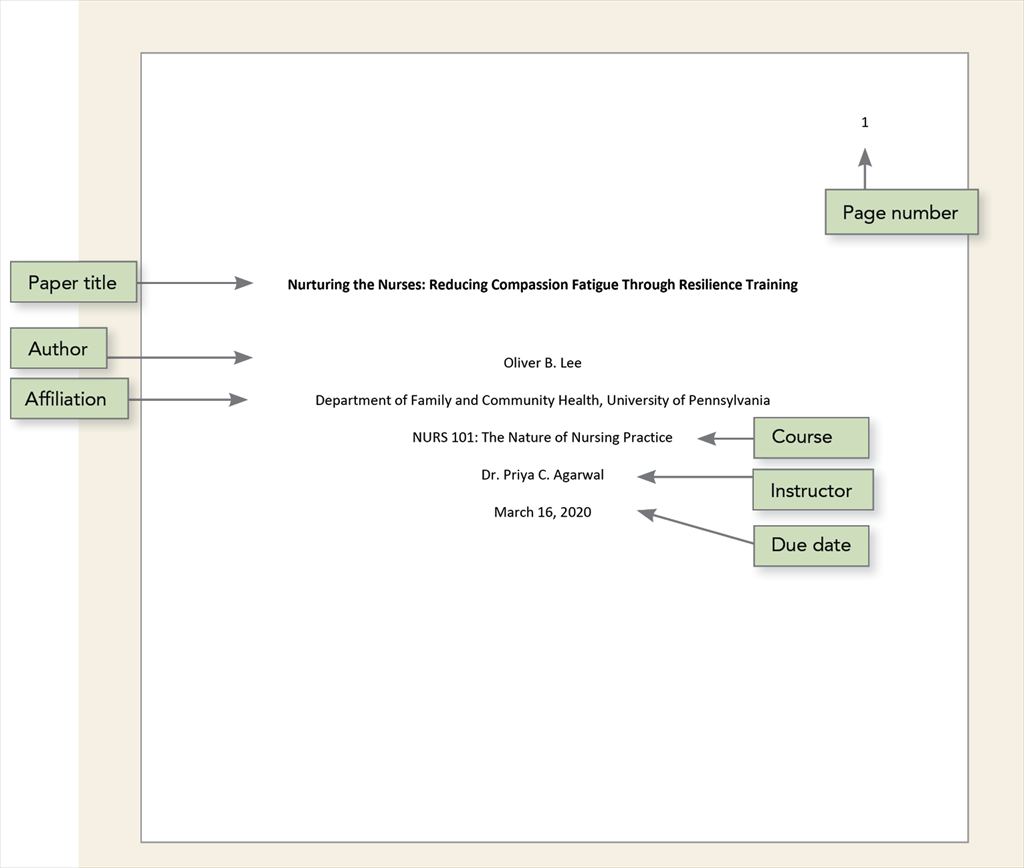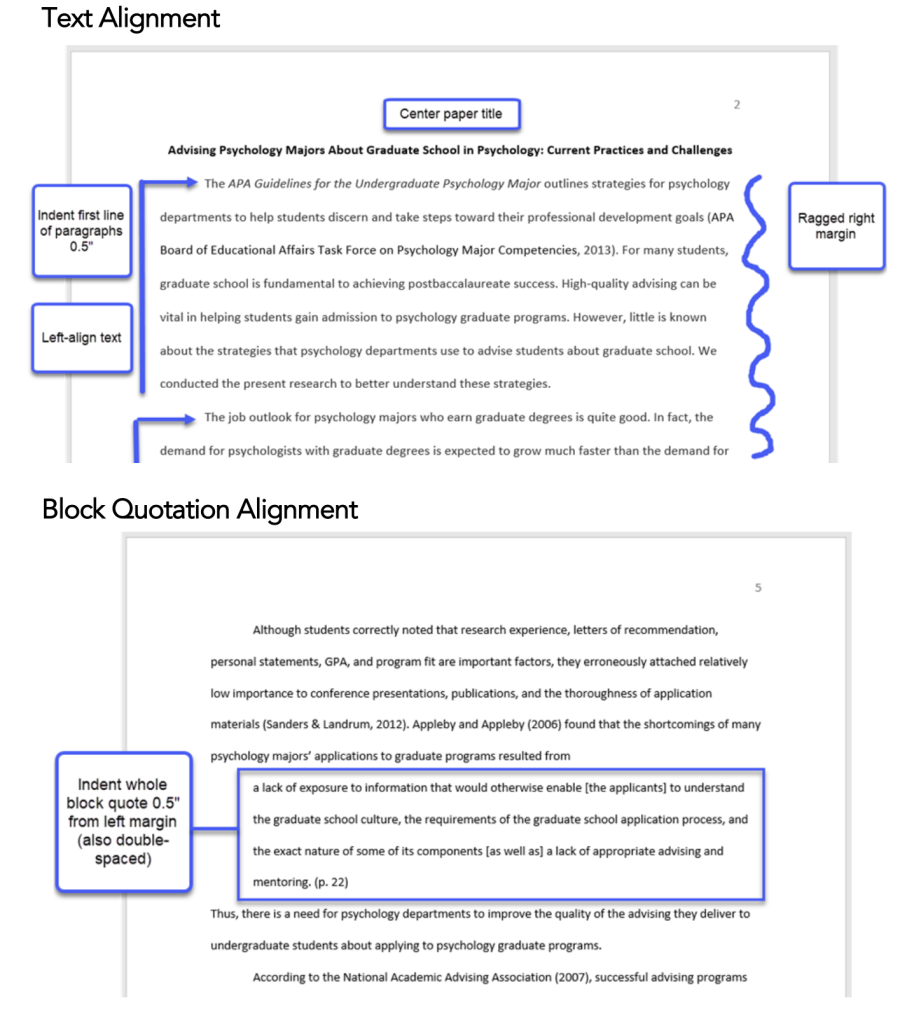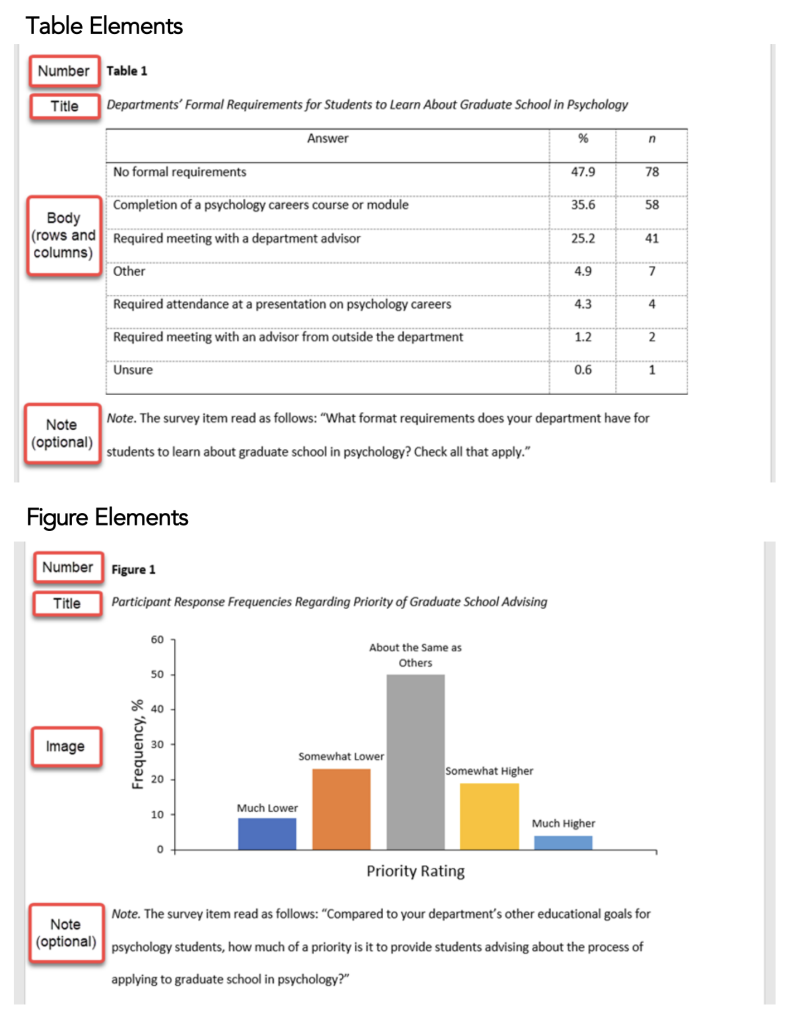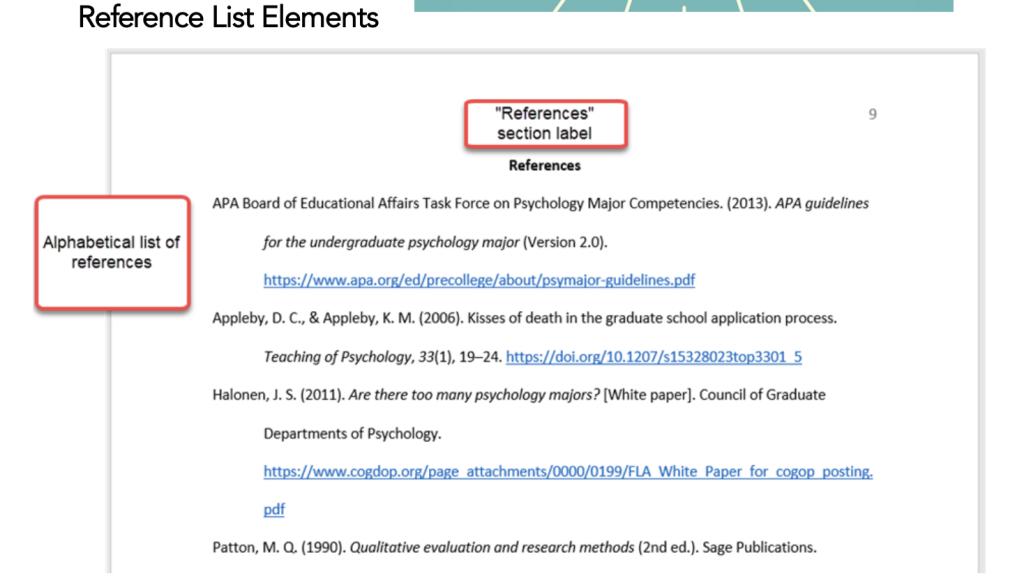APA Format Guide
This guide will provide the basic concepts for students and researchers to properly format research papers in the APA Citation Style 7th Edition.
Basic Setup
– Double spacing (within and between references)
– Hanging indent of ½ inch
– Legible font (e.g. Times New Roman 12 or Arial 11)
– Page number in the top-right header
– See the Sample Paper (APA official)
Title Setup (Student Paper)

Features:
Paper title, Author Name, Author Affiliation, Course Number and name Instructor name, assignment due date, and page number.
More information is in APA Style.
In-text Citation
Following the usage of a quotation or paraphrase from another source, in-text citations must be supplied.
In-text citations are references to a direct quotation or paraphrase that appears in the context.
These citations present the surname of an author and the date of publication.
Single Author
Using James Mitchell as an example author, this takes the form: Mitchell (2017) asserts… Or … (Mitchell, 2017).
The structure of this changes depending on whether a direct quote or parenthetical is used:
Direct Quote: The citation must follow the quote directly and contain a page number after the date, for example (Mitchell, 2017, p.104).
This rule holds for all of the variations listed.
Parenthetical: The page number is not needed.
Multiple authors and corporate authors
When a source has multiple authors or is authored by an organization, the in-text citation is modified considerably.
Pay attention to punctuation and the use of the ampersand (&) symbol.
| Author type | Parenthetical citation | Narrative citation |
|---|---|---|
| One author | (Mitchell, 2017) | Mitchell (2017) |
| Two authors | (Smith & Jones, 2020) | Smith and Jones (2020) |
| Three or more authors | (Smith et al., 2020) | Smith et al. (2020) |
| Organization | (APA, 2020) | APA (2020) |
More information is in APA Style.
Paraphrasing & Direct Quote
Short Quotation (Not more than 40 words)
For quotes of less than 40 words, contain them in quotation marks and integrate them into your own text, and no extra formatting is required. Despite the original source having an ellipsis, do not place an ellipsis at the beginning and/or end of a citation.
Example:
Effective teams can be difficult to describe because “high performance along one domain does not translate to high performance along another” (Ervin et al., 2018, p. 470).
Long Quotation (40 words or more)
– Quotes of 40 words or more should be formatted as block quotes.
– Avoid using quote marks around block quotations.
– Begin a block quote on a new line and indent it to the left by half an inch.
– Indent the full block quote with two spaces.
– Do not add more spacing before or after.
– If the quote has multiple paragraphs, indent the first line of each successive paragraph by an extra 0.5 inches.
– Either (a) identify the source in parentheses after the final punctuation of the quote, or (b) credit the author and year in the narrative before the quotation and insert just the page number in parenthesis after the quotation.
– In neither instance should a period be added after the closing parenthesis.
Sample:
Block quotation with parenthetical citation:
Researchers have studied how people talk to themselves:
Inner speech is a paradoxical phenomenon. It is an experience that is central to many people’s everyday lives, and yet it presents considerable challenges to any effort to study it scientifically. Nevertheless, a wide range of methodologies and approaches have combined to shed light on the subjective experience of inner speech and its cognitive and neural underpinnings. (Alderson-Day & Fernyhough, 2015, p. 957)
Block quotation with narrative citation:
Flores et al. (2018) described how they addressed potential researcher bias when working with an intersectional community of transgender people of color:
Everyone on the research team belonged to a stigmatized group but also held privileged identities. Throughout the research process, we attended to the ways in which our privileged and oppressed identities may have influenced the research process, findings, and presentation of results. (p. 311)
More information is in APA Style.
Text Setup

Features:
1. Repeat the paper title at the top of the first page of text.
2. Begin with an introduction to provide background and context.
3. Use descriptive headings to identify other sections (e.g., Method, Results, Discussion for quantitative research papers).
4. Sections and headings vary depending on paper type and complexity.
5. Text can include tables and figures, block quotations, headings, and footnotes.
6. Line Spacing (double-space all text, including headings and section labels, paragraphs of text, and block quotes).
7. Text Font:
-Use the same font throughout the entire paper.
-Write body text in standard (nonbold, nonitalic) font.
-Use italics sparingly, for instance, to highlight a key term on first use
Table & Figure Setup

Features:
1. Embedding at the Bottom of the Page: xxxxx (see Figure 1).
2. Embedding at the Top of the Page: Table 1 presents xxxxx.
Either writing style you are using, you need to direct the readers with clear information.
More information is in APA Style.
Reference List Setup

Manual Entry: You need to create a complete bibliography for your credited work.
Reference Management Software: Generate or update the bibliography list at the end.
More information is in APA Style.
